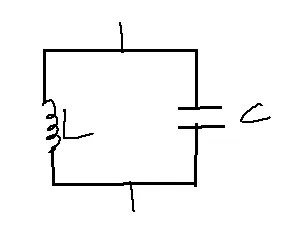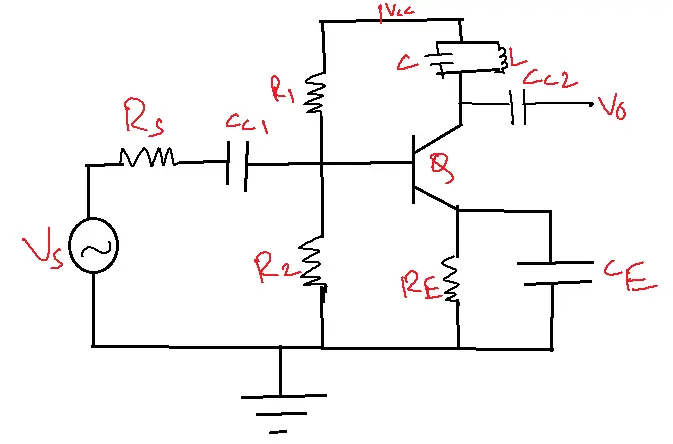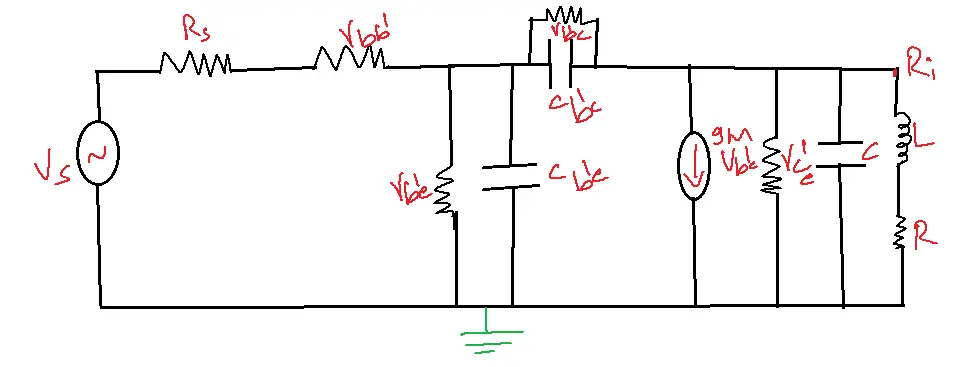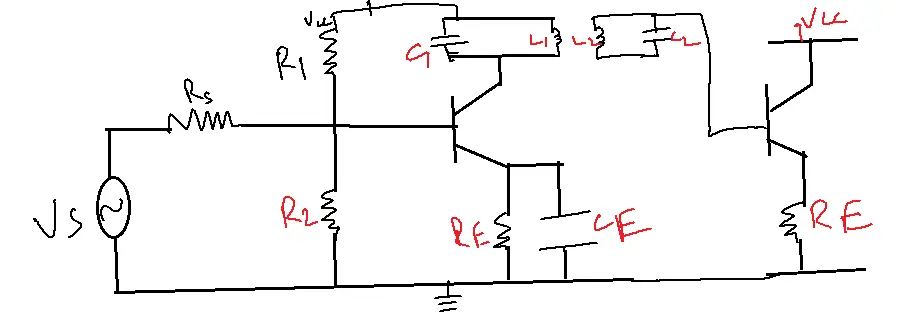- A tuned Amplifier is used to amplify the selective range of frequencies.
- These Amplifiers amplify only one particular frequency.

- Reactance of inductor = Reactance of capacitance.
- XL = XC
- fr = 1/2π square root of(LC)
- The tuned circuit can amplify a signal over a narrow band of frequencies.
- A parallel-tuned circuit has high impedance at its present frequency.
- The main advantage of these amplifiers is that they amplify either a single radio frequency signal or a narrow band of frequencies centered about a resonant frequency. Inductors have losses and a quality factor represents those.
- Q=XL/R = wL/R
- Quality factor: It is an important characteristic of an inductor. The quality factor is the ratio of reactance to resistance.
- It is the measure of how pure or how real the inductor is.
- If the resistor and inductor are connected in series, Q=wL/RT
- If the resistor and inductor are connected in parallel, Q= RT/wL
Table of Contents
Requirements of Tuned Amplifier:
- The amplifier should provide selectivity of resonant frequency over a very narrow band.
- The signal should amplify equally with all frequencies in the selected narrow band.
- The tuned circuit’s mounting should allow for easy tuning, with simultaneous tuning capability if multiple circuits are present.
- The amplifier should facilitate easy adjustment of its components to achieve the desired frequency within a broad range or band.
Single Tuned Capacitive Coupled Amplifier:

- The collector circuit consists of an LC tank circuit. Here R1, R2, and RE provide voltage divider biasing for the network.
- CE functions to bypass the emitter, while Cc1 and Cc2 are responsible for coupling stages within the circuit.
- Next stage input is coupled through a capacitor. Hence the name capacitive coupled single-tuned amplifier.
- A hybrid π model can analyze a single-tuned capacitive coupled amplifier. The figure below illustrates the hybrid π model for a single-tuned, capacitive-coupled amplifier:
- Ri – input impedance of next stage.
- Vbc’ = 4MΩ is neglected because rb’c has a very large value.
- Apply Miller’s theorem
- Ceq = C + C0
- Center frequency or resonant frequency is given as fr = 1/2π√LPCeq

Classification of Tuned Amplifiers:
- Single tuned: collector loop – one tank circuit consists of either capacitive or inductive or transformer.
- Double-tuned: Two tank circuit – collector loop is present.
- Stagger-tuned: cascading is done in this amplifier.
- Single-tuned with capacitive coupling and signal tapping.
Examples:
- A tuned amplifier has its maximum gain at a frequency of 2 MHz and has a bandwidth of 50 KHz. Calculate the Q-factor.
Solution: fr = 2 MHz BW= 50 KHz
Q = fr/BW = 2 x 10-6/50 x 103 = 40.
- A single-tuned RS amplifier uses a transistor with an output resistance of 50 kilo ohm, output capacitance of 15 PF and input resistance of the next stage is 20 kilo ohm. The tuned circuit consists of 47PF capacitance parallel with the series combination of 1µH inductance and 2 ohms resistance. Calculate Resonant frequency
Solution: Resonant frequency
fr = 1/2π√LCeq
Ceq=C+C0
fr = 20.2 MHz.
Inductive coupled single-tuned amplifier:

- R1, and R2 form potential divider arrangements.
- CE- Emitter bypass capacitor
- The output of the first stage is connected to the second stage, which is coupled to the next stage through an inductor, hence the name is obtained.
- This circuit is also called a transformer-coupled single-tuned amplifier. L1 serves as the primary winding of the transformer, while L2 acts as the secondary winding. The turn ratio is optimized to ensure maximum power transfer to the subsequent stage.
Applications of Single-Tuned Amplifiers:
- Radio Frequency (RF) Amplifiers: These amplifiers are widely used in RF circuits, particularly radio receivers. They select and amplify a specific radio frequency signal while rejecting unwanted frequencies, enabling clear reception of the desired station.
- Intermediate Frequency (IF) Amplifiers: In superheterodyne receivers, this amplifiers are employed as IF amplifiers. They amplify the intermediate frequency signal, obtained after mixing the incoming RF signal with a local oscillator signal. This stage enhances the receiver’s overall selectivity and gain.
- Television (TV) Circuits: TV circuits utilize single-tuned amplifiers to boost specific video or audio frequencies. These filters play a vital role in isolating the desired channel while suppressing interference from other channels, resulting in clear visuals and audio.
- Communication Systems: These amplifiers amplify specific frequencies in communication systems, filtering unwanted signals. This improves the signal-to-noise ratio and overall communication quality.
- Medical Equipment: These amplifiers amplify specific frequencies in devices like ECG machines and MRI systems. This aids in accurate diagnosis and analysis of medical conditions.
Double Tuned Amplifiers:

L and C form the first tan circuit.
L2 and C2 form the second tan circuit.
This amplifier provides a wider bandwidth than the single-tuned amplifier.
The frequency response is shown in the figure below:

Applications of Double-tuned Amplifier:
- Intermediate Frequency (IF) Amplifiers: These amplifiers are widely used as IF amplifiers in radio receivers. They provide high selectivity, allowing the receiver to tune to a specific frequency while rejecting adjacent channels, resulting in clear reception.
- FM Demodulators: Double-tuned circuits are employed in FM demodulators to extract the original audio signal from the frequency-modulated carrier wave. The selectivity of the double-tuned circuit is crucial for accurate demodulation and high-quality audio output.
- Bandpass Filters: These amplifiers can be configured as bandpass filters, allowing a specific range of frequencies to pass while attenuating frequencies outside this band. This is useful in various applications, including audio equalizers, signal processing, and communication systems.
- Video Amplifiers: In television receivers, double-tuned amplifiers are used in the video amplifier stage to amplify the video signal while filtering out unwanted noise and interference. This ensures a clear and sharp picture on the screen.
- Resonant Circuits: Double-tuned circuits create resonant circuits with sharp frequency responses. These circuits are vital for precise frequency control in applications like oscillators and synthesizers.
FAQs Related to the topic:
1. What is the difference between a double-tuned and single-tuned amplifier?
- Single-tuned amplifier: Single-tuned collector load circuit for amplification and selectivity at a specific resonant frequency.
- Double-tuned amplifier: Dual-tuned circuits for better selectivity and bandwidth control.
2. What are the advantages of a double-tuned amplifier over a single-tuned amplifier?
- Sharper selectivity: Double-tuned amplifiers provide a narrower bandwidth, allowing better rejection of unwanted frequencies.
- Flatter frequency response: They can achieve a flatter top in their passband, ensuring more uniform amplification across the desired frequency range.
- Higher gain: They can often provide higher gain at the resonant frequency.
3. What are the applications of double-tuned amplifiers?
- Intermediate Frequency (IF) amplifiers in radio receivers: Provide high selectivity for tuning to specific stations.
- FM demodulators: Extract audio signals from FM radio waves.
- Bandpass filters: Select a specific range of frequencies in audio and communication systems.
- Video amplifiers: Enhance video signals in television receivers.
4. What are the applications of single-tuned amplifiers?
- Radiofrequency (RF) amplifiers: Amplify weak signals from antennas.
- Local oscillators: Generate stable reference frequencies in communication systems.
- Tuning circuits: Select specific frequencies in radio tuners.
5. What are the challenges of designing double-tuned amplifiers?
- Complexity: They are more complex to design and analyze than single-tuned amplifiers due to the interaction between the two tuned circuits.
- Alignment: Proper alignment of the two tuned circuits is critical for achieving the desired frequency response and bandwidth.
